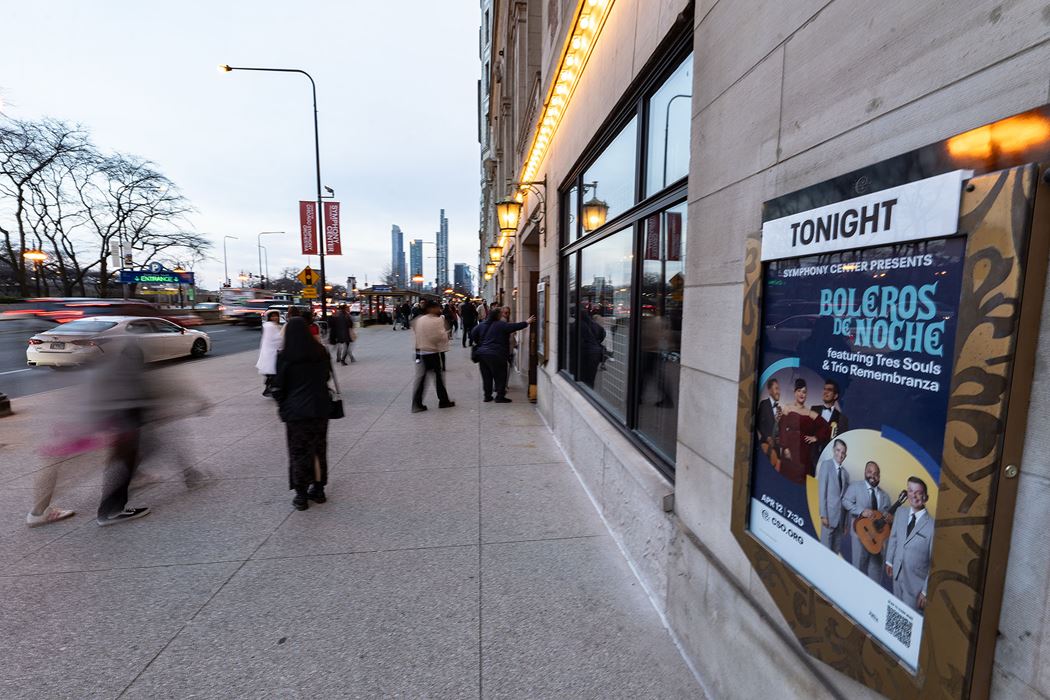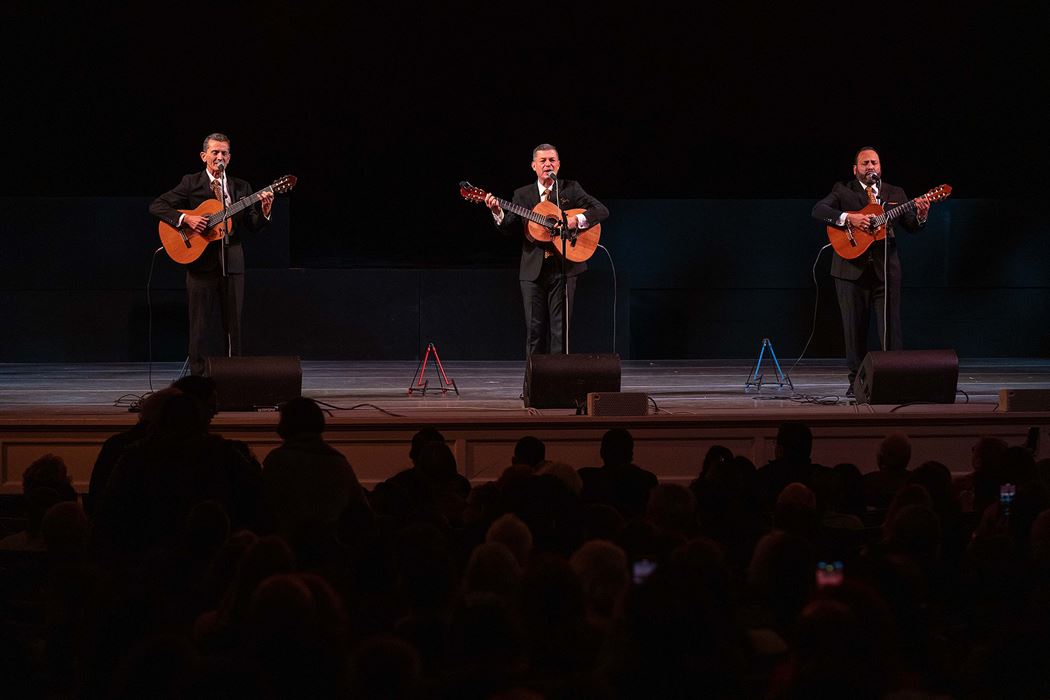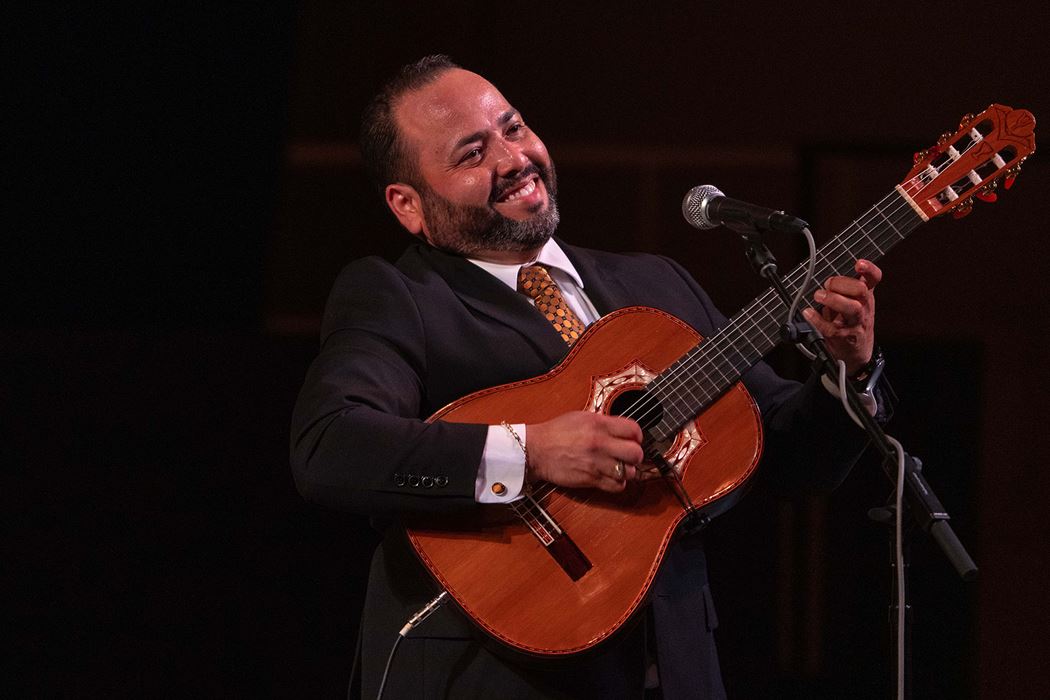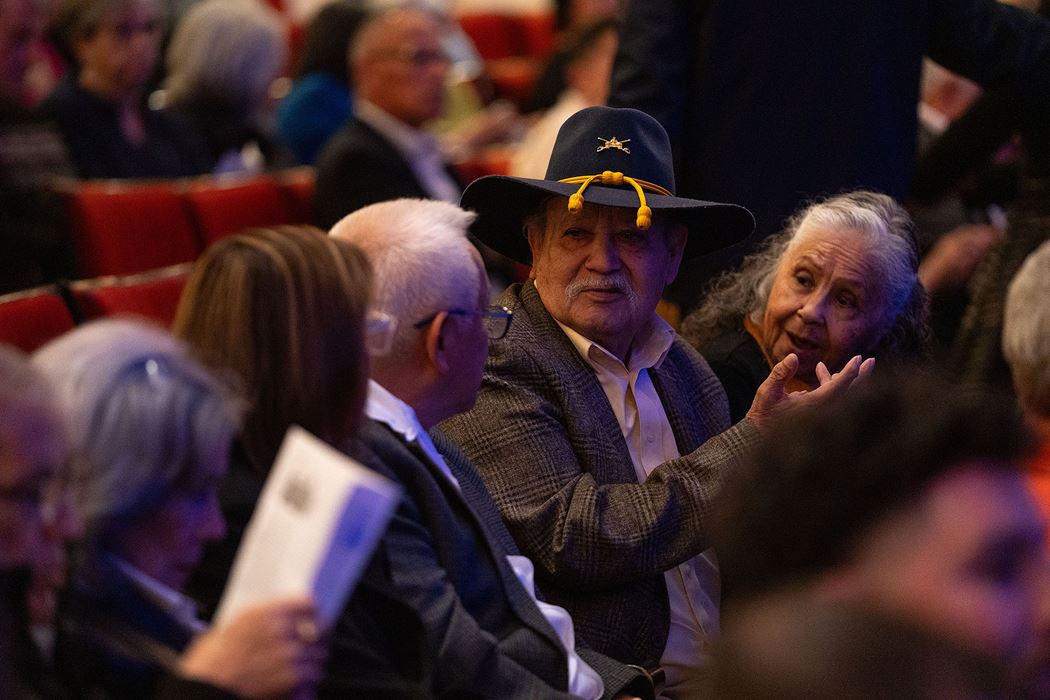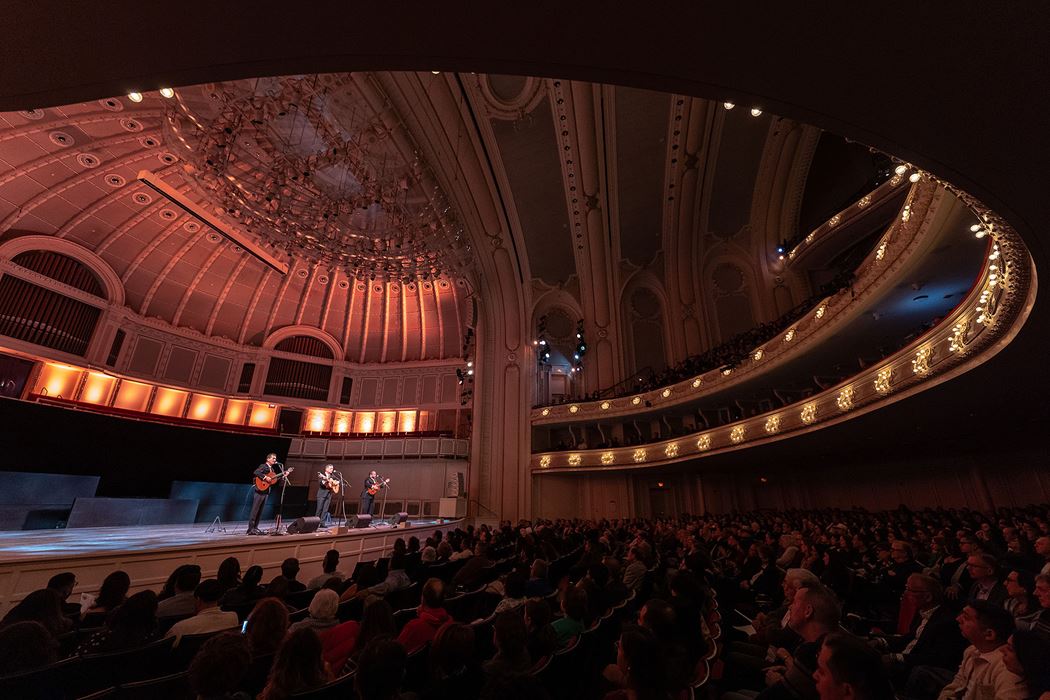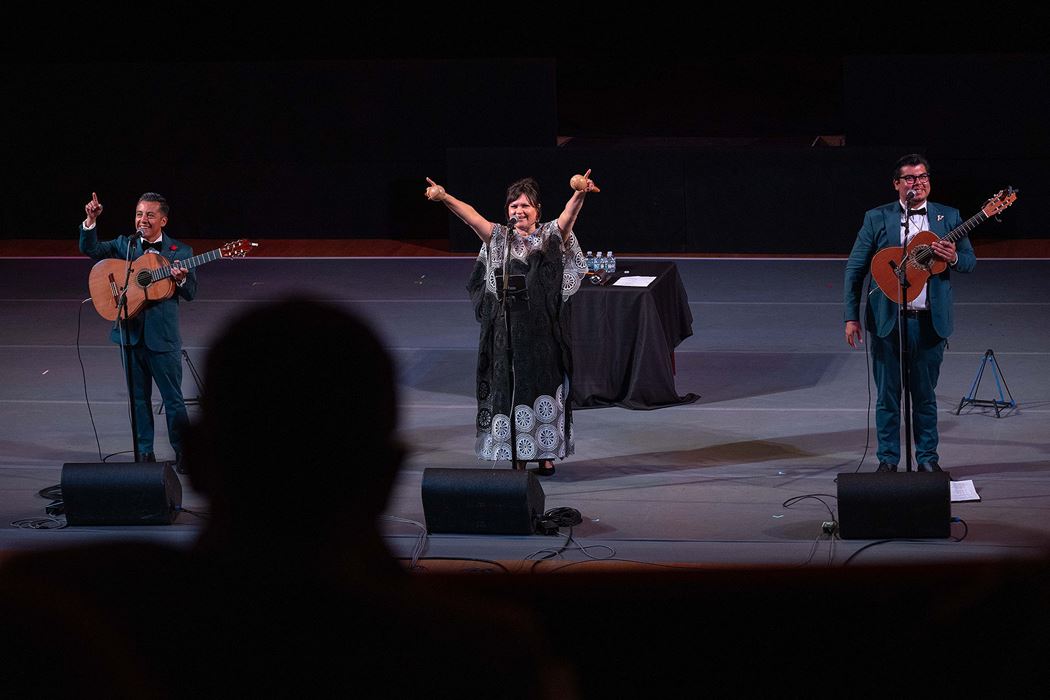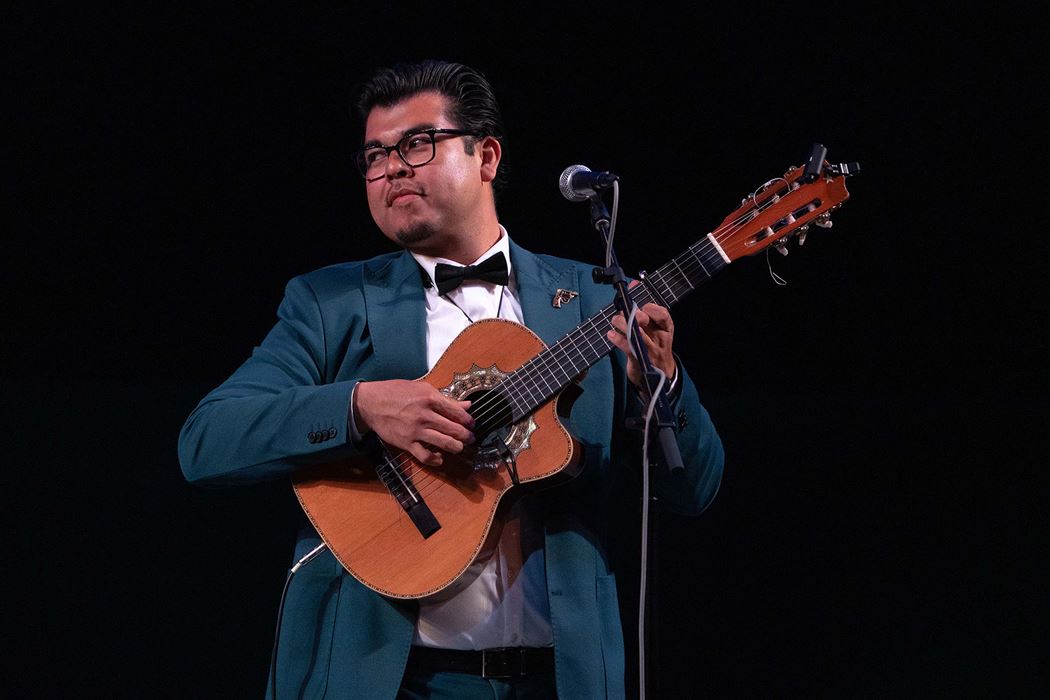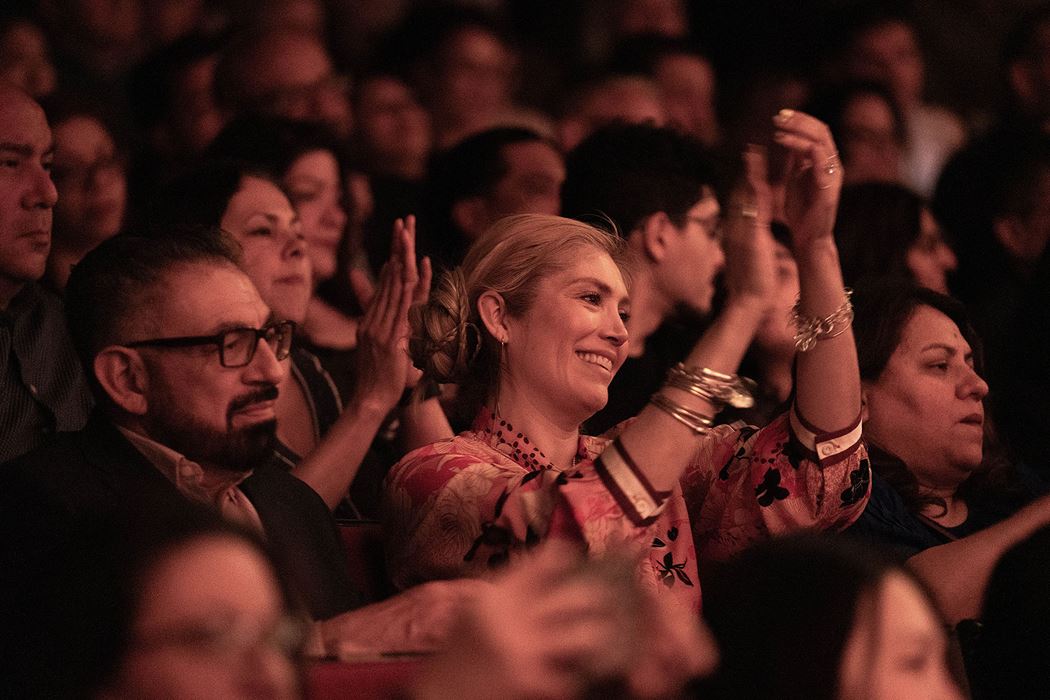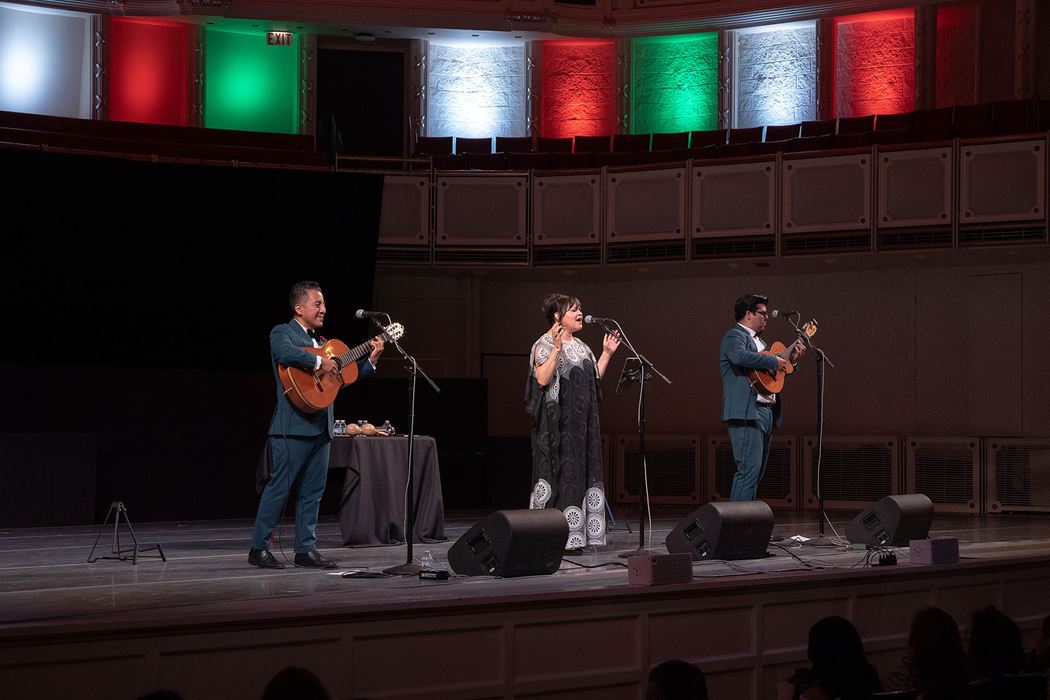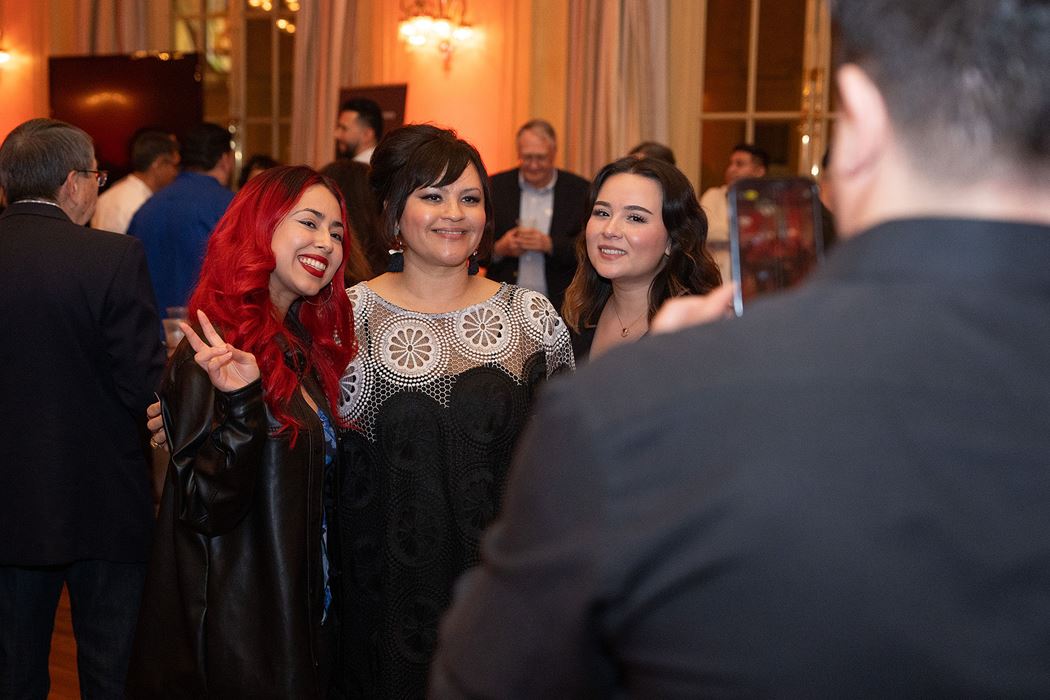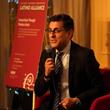After the Boleros de Noche concert, guys in guayaberas gather in Grainger Ballroom: Juan Carlos Arenas (from left), Ramiro J. Atristaín-Carrión, Juan Solana and Henry Johanet.
Photo by Rjatrix
Bolero is more than just a music genre — it’s the soundtrack of romance across Latin America. Born in Cuba, this slow-tempo style is suffused with poetic lyrics based on the themes of love and heartbreak, always sung with soul-stirring emotions.
For me, bolero was part of growing up — woven into the fabric of family gatherings, TV shows and the stories my grandparents and uncles would share. These melodies didn’t just play in the background; they lived in our hearts, always ready to be sung when love — or longing — was in the air.
This week, I felt a strong urge to write about bolero, especially after the beautiful concert Saturday, April 12 at Symphony Center and the passing of Nobel Prize-winning author Mario Vargas Llosa on Sunday, April 13 — the day after the Symphony Center Presents Boleros de Noche concert. I want to dedicate this little article to him. One of his novels, Aunt Julia and the Scriptwriter, once sparked a spirited conversation between my grandparents. They were captivated by how the story had the soul of a bolero — romantic, theatrical and full of feeling.
They especially loved the part where Vargas Llosa recounts the visit of bolero legend Lucho Gatica, and how he had to act as the singer’s bodyguard to protect him from the frenzied admiration of female fans. That scene stayed with me — a perfect mix of music, literature and nostalgia, which deepened my understanding of bolero as more than music — it is culture.
Bolero has transcended generations and borders. Andrea Bocelli sings it. Nat King Cole helped bring it to American audiences in the ’50s and early ’60s. Latin pop star Luis Miguel helped to revive it in the ’90s. Telenovelas kept its lyrics alive. And today, new artists are remixing those same soulful words for contemporary listeners. At Symphony Center, we witnessed the music’s vibrancy as two incredible groups — Puerto Rico’s Trío Remembranza and Los Angeles-based Tres Souls — performed boleros and South American valses with passion and grace — without sheet music, just heart.
The concert was curated by Roberto Carlos, founder of Boleros de Noche, an annual traveling festival that originated in Los Angeles, and member of the trio Tres Souls. Describing himself as a “romantic rebel,” Carlos is on a mission to revive bolero for modern audiences. To him, bolero is more than nostalgic — it’s poetic, cultural and powerfully connective. He believes we’re on the edge of a bolero renaissance. And sitting in that audience, hearing people around me quietly sing along, I believed it, too.
One of the most touching moments of the night? Learning that a couple in the audience was celebrating 70 years of marriage — 70! Their love story could have been the basis for a bolero. After the performance, our Latino Alliance members gathered in the Grainger Ballroom for a post-concert reception, mingling with the artists. Many of the male attendees wore guayaberas — those untucked, breezy shirts that immediately seem to transport their wearers to Latin America. It felt as if Chicago had turned tropical for the night.
And maybe we started a new tradition — Noche de Guayaberas. What a joyful, soulful evening. I can’t wait for the next one.
